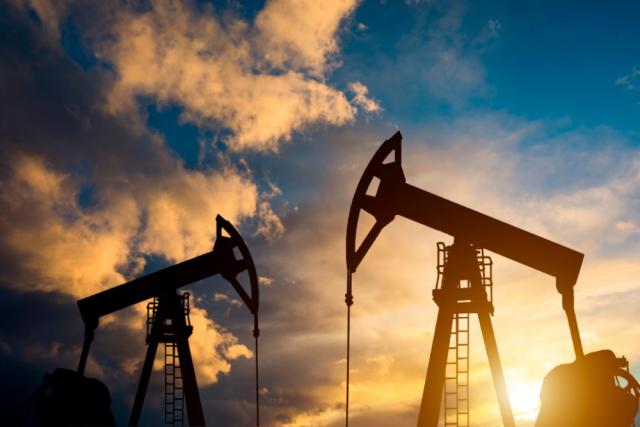
(Source: Anton Petrus/Shutterstock.com)
Despite an already painful year so far, even tougher times could be ahead for the oil and gas industry as the market might takes years to rebalance, according to a panel of experts.
The insight was delivered during a recent webinar as the oil and gas industry moved deeper into the third quarter following a chaotic second quarter marked by plummeting demand, oversupply, tanking oil prices and a global pandemic that could enter a second wave. Oil producers across the world, including OPEC+ and those in the U.S., cut production to help ease the crisis.
“Fast forward to the future—Q3, today … we’re undersupplied, which means we are pulling crude out of stocks and we expect next quarter that will ramp up,” said Bernadette Johnson, vice president of strategic analytics for Enverus. “We’ll pull even more crude out of stocks and through next year. That’s what’s going to enable this market to rebalance for us to reach equilibrium and see a higher price over time. But it also means it’s going to take that long. So, don’t expect a $50 or $60 price tomorrow.”
WTI has steadily improved since sinking negative in late April, rising above $40/bbl. Enverus expects the price will remain in the $35-$45 range for the rest of the year, Johnson said. It could gradually rise to the $50-$55 range by year-end 2021 before plateauing around $55 for most of 2022 and 2023.
The firm doesn’t expect prices to hit $60 until late 2023 based on supply and demand factors.
Looking at supply today, OPEC+ is scheduled to begin adding barrels—about 1.5 MMbbl/d—back to the global market as agreed-upon voluntary additional supply cuts end.
Production shut-in by some U.S. shale players is also coming back online.
“But we’re still on a downward trajectory. There’s 280 rigs running [and] very few new wells coming online,” Johnson said. “Aside from the shut-ins that have now come back, we’re pretty much in natural decline in most basins around the country. So that means we’re going to see some additional drops. We’re expecting crude to continue to fall until early to mid- next year.”
More Declines Ahead
Oil production from the largest regions across the U.S. is forecast to decline by 56,000 bbl/d in August to about 7.49 MMbbl/d, according to the U.S. Energy Information Administration’s latest monthly Drilling Productivity Report. Gas production could dip 712 MMcf/d to 79.55 Bcf/d.
However, as Johnson noted, production could change depending on the direction of oil prices. If prices are under $30/bbl, supply falls; $40, supply falls and flattens; $50, slightly growing, she said.
Crucial factors are demand and the need for certain refined products. Gasoline demand has improved, but jet fuel—which Johnson said “fell off a cliff”—still hasn’t recovered given the continued global presence of COVID-19.
Meanwhile, oil and gas companies are adjusting amid today’s cloudy conditions that have been perilous for many.
“Currently, we’re about 75% down year-on-year in oil rigs, 60% down on rigs drilling for gas,” said Eric Stevens, senior vice president for Netherland Sewell & Associates (NSAI). “That’s considerably lower than it’s been in a long time.”
For those E&P companies hanging on, Stevens sees most activity concentrated in the Permian Basin, Haynesville and Marcellus/Utica. Collectively, the three plays make up about 75% of the ongoing activity in the U.S., he said.
“When you talk about a public company that has to drill their PUDs within five years, rigs dropping to 25% of what they were a year ago, that’s going to have an impact on how quickly they’re able to convert their inventory to PDP,” he said.
PUDs will fall this year, but Stevens noted a silver lining: operators have a chance to review data, evaluate well interference and optimize well spacing along and capital being deployed.
In the Permian Basin, for example, “companies are looking at interference and trying to optimize the economics as best they can and benefiting from up spacing,” he said. “You’re going to see much more of the discussion around four to six wells per section versus some of the higher numbers that were being tested out in prior years.”
E&P companies have also made significant cost cuts this year but Stevens questioned how much of those cuts will be sustained as wells are brought back online.
Growing Bankruptcies
Some companies have struggled more than others, with lenders less willing to extend helping hands.
“We found that largely banks were reluctant to dramatically drop their borrowing bases. But the fall may be another story altogether,” said Jeff Nichols, partner and co-chair of Haynes and Boone’s energy practice group.
He added, that 2020 already looks like it will be a record year for bankruptcies.
The firm’s Oil Patch Bankruptcy Monitor shows, as of June 30, 18 E&Ps had filed for bankruptcy during the second quarter, compared with only five during the first quarter.
“Nobody expects the second half to be the same as the first half,” Nichols said. “Everyone generally thinks that a lot of these companies are getting ready to file.”
Though there are various estimates on how many companies could file for bankruptcy this year, Nichols said: “I keep hearing around a hundred or so may file.”
A recurring theme among the restructurings is debt will be equitized.
Some companies are also finding lifelines through lending programs such as the Main Street Lending Program, he said.
Additionally, second-half 2020 has some issues that will be closely watched by the accounting world. Among these are going concern evaluation, impairment of long-lived assets, collection of accounts receivable and debt restructuring, said Joe Blice, CPA and national practice leader of oil and gas for Moss Adams.
The industry is “starting to see these pop up more frequently,” Blice said of debt restructuring. “But this is a really difficult and complicated area of GAAP that requires a lot of careful consideration. Is it a troubled debt restructuring, first of all? Is the company in financial distress? Second of all, did the bank actually grant a concession as they’re defined by GAAP? Those are difficult.”
Industry players and watchers are also looking at what the future may hold for M&A.
Though his firm has seen a lot of deals try to happen, Blice said, “it’s still been very difficult to get the bid and the ask to reconcile. And so, while I personally believe there is a significant opportunity for M&A deals—companies that need to focus on a given area and release noncore assets should be able to do so—I’m not seeing it happened yet in my small piece of the world.”
However, that may change soon, according to Stevens.
“The difficulty of sellers and buyers finding common ground is going to come to a tipping point at some point,” he said. “You can’t delay any further. You’re going to have to concede to some degree.”
“I think we’re seeing with these recent deals may be the start of many more to come later this year,” he said referencing the small trickle of deals announced so far in the second half of 2020.
Recommended Reading
Kinder Morgan to Build $1.7B Texas Pipeline to Serve LNG Sector
2025-01-22 - Kinder Morgan said the 216-mile project will originate in Katy, Texas, and move gas volumes to the Gulf Coast’s LNG and industrial corridor beginning in 2027.
East Daley: Midstream Investors Drawn to Southeast as Demand Heats Up
2025-03-25 - Competition for gas supply will heat up as demand from data centers and new LNG projects jockey for a spot on takeaway lines.
Ironwood Launches Third Eagle Ford Midstream Co. After January Sale
2025-03-25 - Ironwood Midstream has launched its third iteration after having sold assets to Plains All American in January.
Williams’ CEO: Pipeline Permitting Costs Twice as Much as Steel
2025-03-12 - Williams Cos. CEO Alan Armstrong said U.S. states with friendlier permitting polices, including Texas, Louisiana and Wyoming, have a major advantage as AI infrastructure develops.
Northwind Midstream Puts Delaware Basin Plant Expansion in Service
2025-03-13 - Northwind Midstream, backed by Five Point Energy, plans to continue growing its gathering and processing and amine treatment facilities.
Comments
Add new comment
This conversation is moderated according to Hart Energy community rules. Please read the rules before joining the discussion. If you’re experiencing any technical problems, please contact our customer care team.






